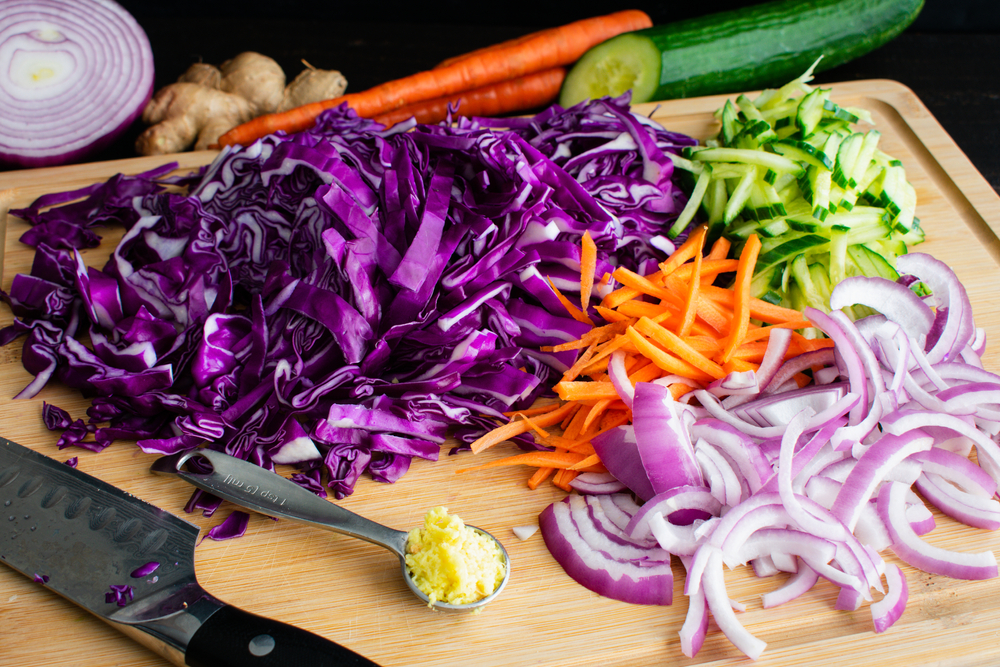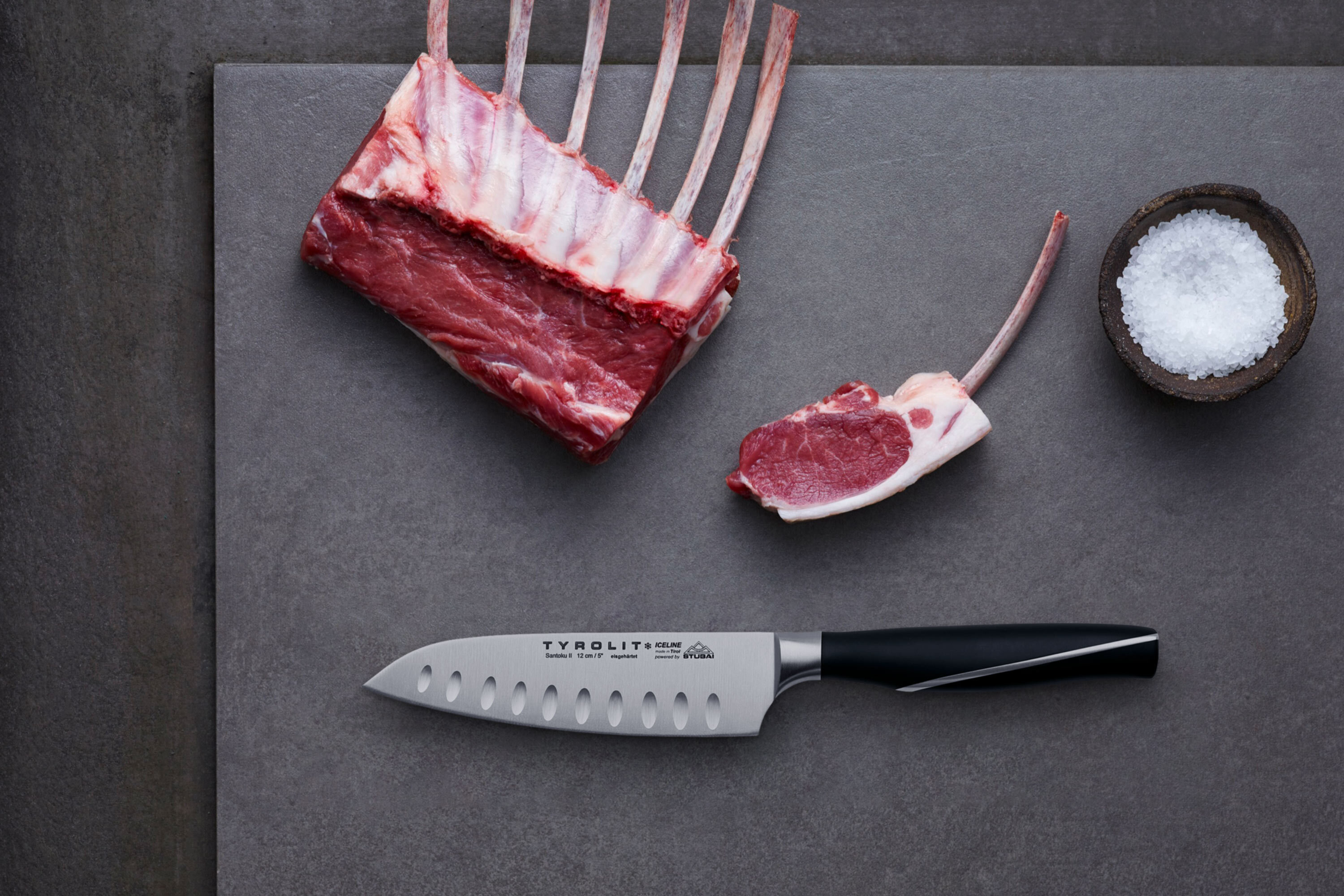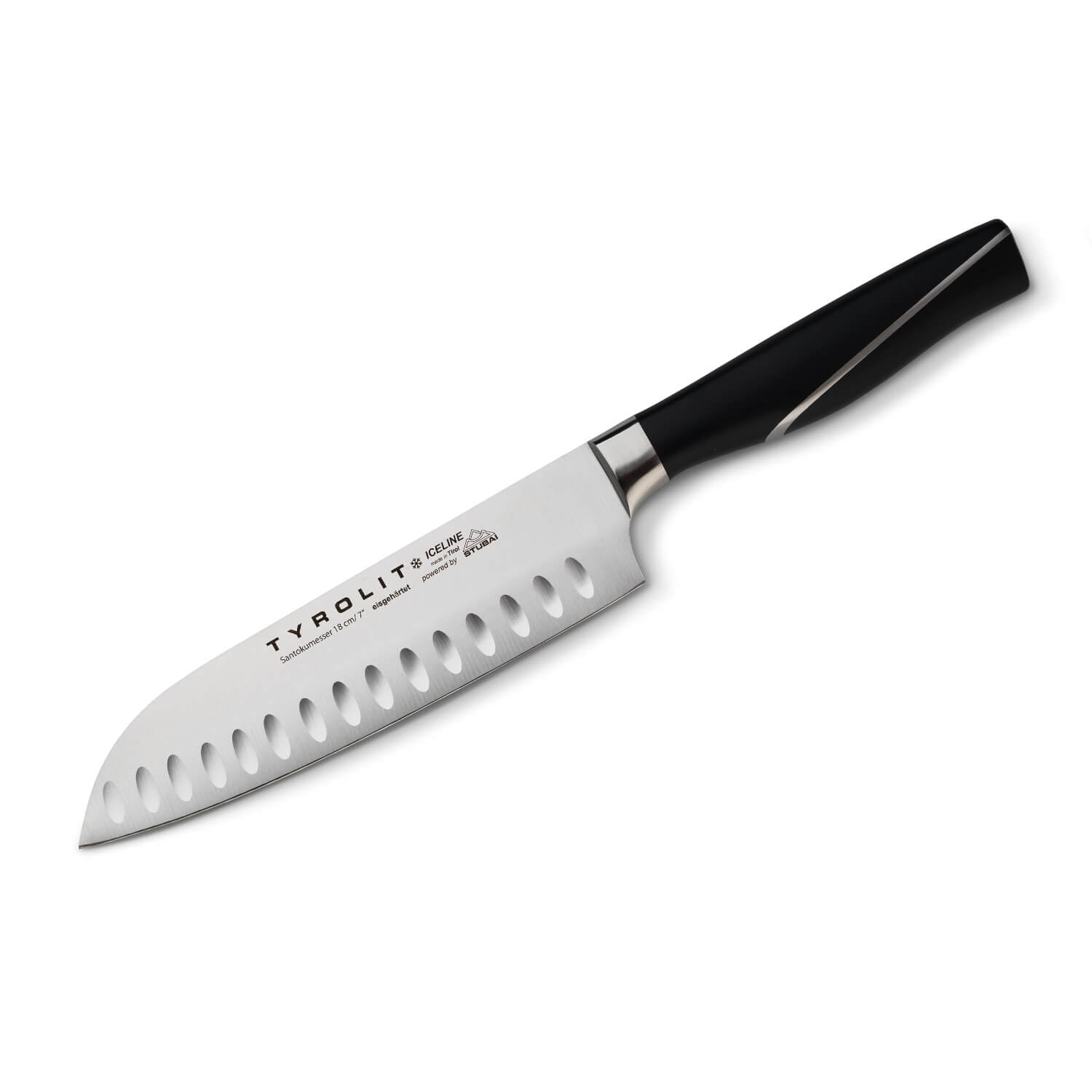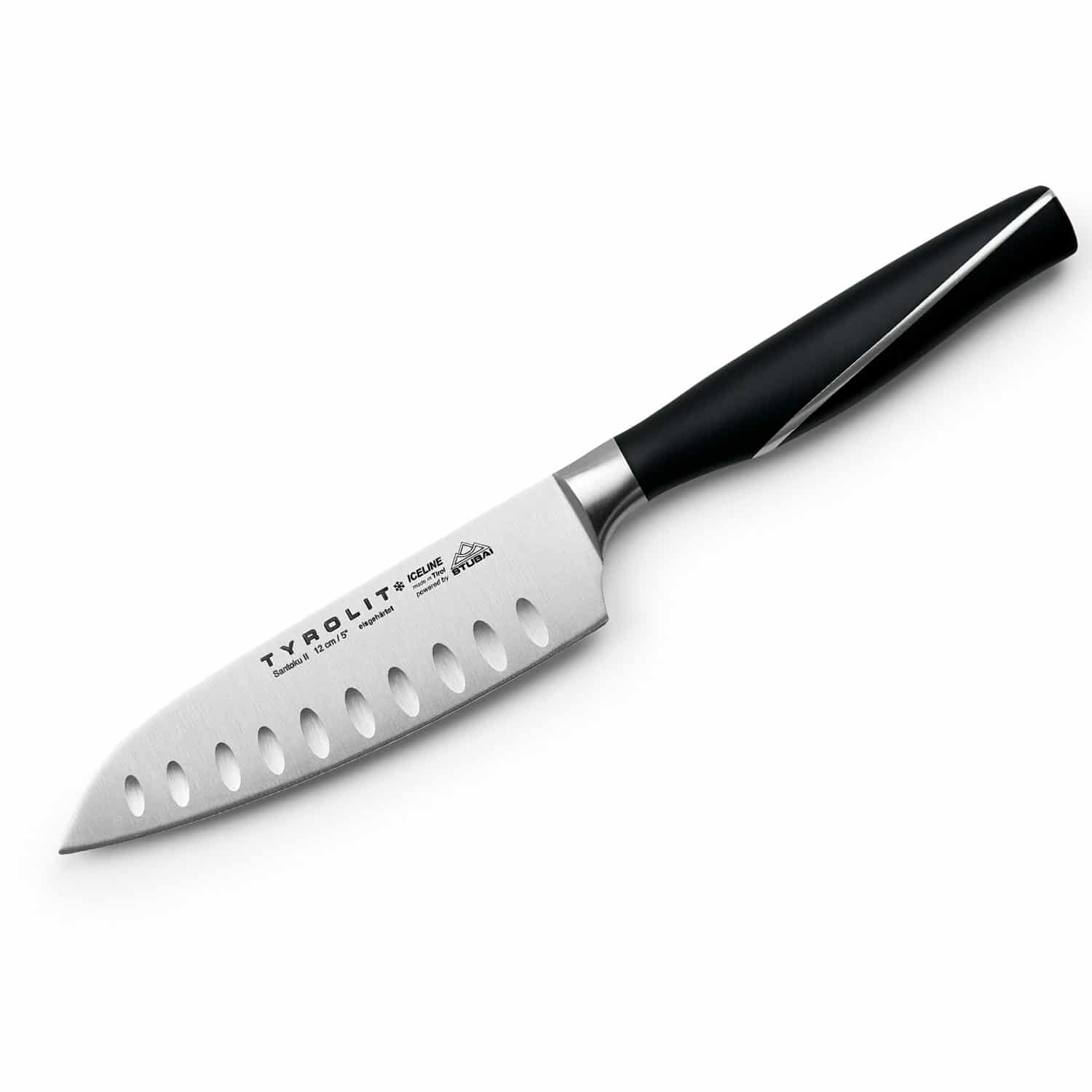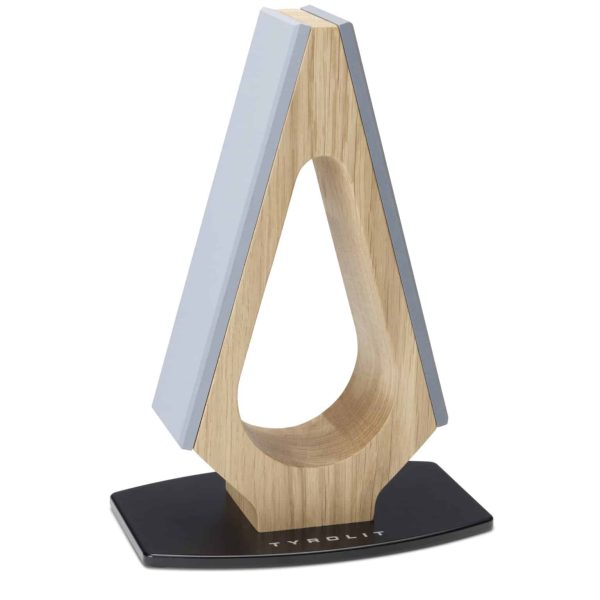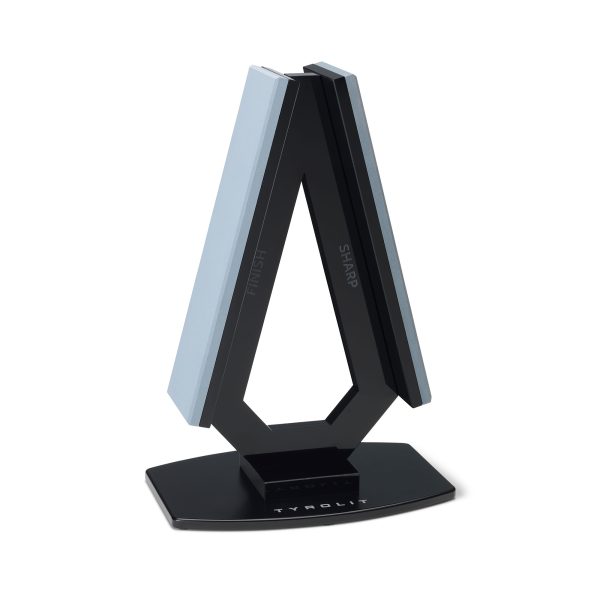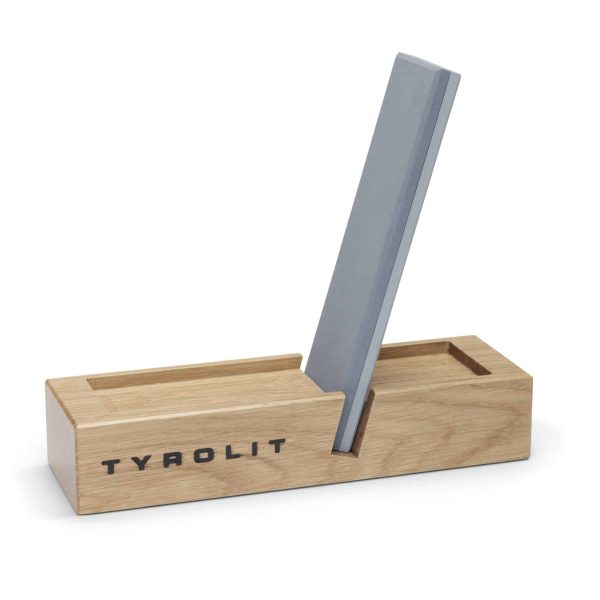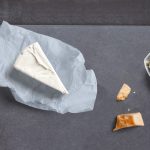What is a santoku knife? The Japanese all-rounder of chef’s knives
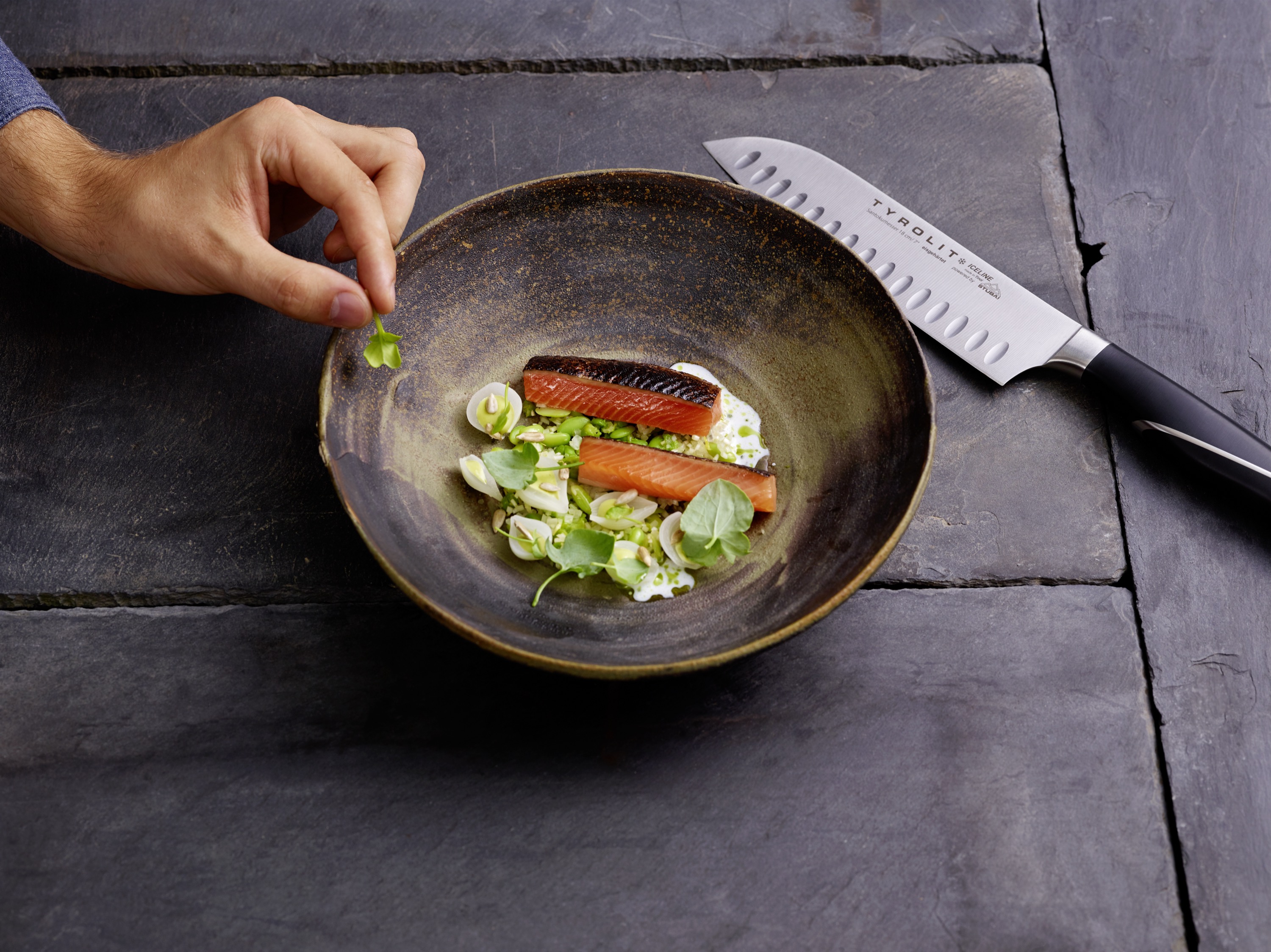
The Santoku knife is a true kitchen knife all-rounder and an ideal complement to the classic European chef’s knife. In this post, we will explain exactly what a Santoku knife is. Discover everything about this multi-talented tool in the kitchen, known for its exceptional versatility
Whether meat, fish or vegetables – with this all-rounder among Japanese blade shapes, you are ideally equipped for almost every kitchen task. The word “Santoku” is often equated with Japanese kitchen knives. However, this is not correct. The Santoku refers to a specific Japanese knife shape.
What exactly is the Japanese santoku knife?
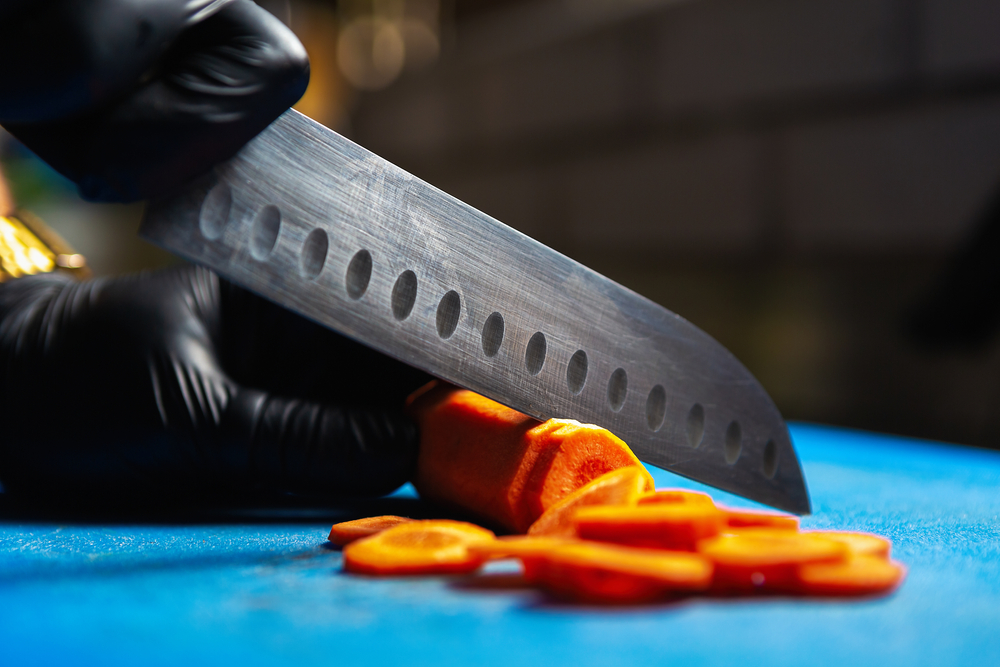
A santoku knife is a jewel of Japanese blacksmithing and a must-have in any modern kitchen. The name “Santoku” is derived from Japanese and means “three virtues”. “San” stands for “three”, “Toku” for virtues. These virtues represent the versatility of the knife: it is made for cutting, dicing and chopping.
Unlike a traditional European chef’s knife, the santoku knife is characterized by a wider and shorter blade, often equipped with a hollow edge. These features make it the ideal multipurpose knife suitable for both meat and vegetables. It combines the precision of Japanese knife craftsmanship with flexibility, making it an indispensable tool in the kitchen. Indeed, the philosophy of the santoku knife is closely tied to the principles of Japanese cuisine, where aesthetics and functionality go hand in hand
Production – How is the Santoku knife made?
In the following, you will find out in broad terms what is important in production and which materials are used.
Crafts and Techniques
The production of a santoku knife is a work of art in which every curve, every angle and every length is precisely thought out. The shape and length of the blades are particularly important.
Unlike other knives, the blade of a santoku knife is often wider and shorter, giving the knife its characteristic versatility. However, the design is not only aesthetic, but also functional.
The master craftsmen employ special techniques such as “cooling” and “tempering” (heating) to achieve the ideal hardness and toughness of the blade. Blades with hammer strikes or hollows are sometimes uneven. These indentations enhance the knife’s glide capability.
Materials – What is the Santoku knife made of?
A glance at the blade reveals more about the soul of the knife than any other element. Various types of steel can be employed to cater to the varying needs of cooks, from amateurs to professionals, ensuring the desires of all are met.
The legendary Damascus steel, known for its hardness and the fascinating pattern of the blade, is used. Aogami steel, also known as “blue paper steel”, is another material commonly used in high quality santoku knives.
It offers exceptional hardness and durability, but requires more care than stainless steel. Stainless steel is a widely used material because of its corrosion resistance and easy care.
Specific applications of a Santoku knife
Basically, much less effort is required for Santoku and the other Japanese chef knives than for Western kitchen knives. This is due to the sharpness, the thinner blade. The Santoku is a versatile utility knife and shows its strengths in various areas.
Whether it’s precisely slicing meat or finely dicing vegetables, a santoku knife makes many tasks possible. In the kitchen, the santoku knife has its pros and cons – we will delve into these in more detail throughout the article.
Santoku knife – what is this type of knife suitable for?
Santoku knife for what purpose? The Santoku knife is an extremely versatile cutting tool – let’s explore what this type of knife is particularly good for and where it meets its limitations.
Cutting Vegetables – Best Methods and Techniques for Chopping Vegetables
The Santoku knife is regarded as an excellent knife for vegetables, and rightfully so. With its wide blade and shallow angle, it is ideally suited for chopping vegetables. You can effortlessly apply various cutting techniques, such as julienne slicing for carrots or dicing onions. The food does not stick to the blade, which is a significant advantage, especially with sticky or juicy vegetables like tomatoes.
Cutting meat – instructions and tips for cutting meat
The Santoku knife also demonstrates its prowess in cutting meat. The sharp and robust blade enables precise cuts, whether slicing a steak into strips or dividing a chicken breast fillet. Thanks to its typically wide blade, you can easily lift and continue processing the cut material from the work surface. Therefore, the Santoku knife serves as an efficient meat knife, noticeably facilitating kitchen tasks.
With the right use of technology and Santoku knives, kitchen work can not only be designed more precisely, but also more efficiently.
Differences between Santoku knife and chef’s knife
The Battle of the Titans in the Kitchen: Santoku Knife vs. Chef Knife. Although both types of knives are considered the “all-rounders” of the kitchen, there are nuanced differences that make them a star in different culinary scenarios.
The Santoku, a masterpiece of Japanese craftsmanship, stands out with its broad and shorter blade. The flatter edge and smaller angle of the blade enable finer cuts, while the frequently present hollows minimize the sticking of food.
The European chef’s knife, in contrast, is often longer and has a more curved blade. This makes it ideal for the “cradle cut”, a technique commonly used in Western cuisine. It is the workhorse of the kitchen, sturdy and built for a variety of tasks, from coarse chopping to fine slicing.
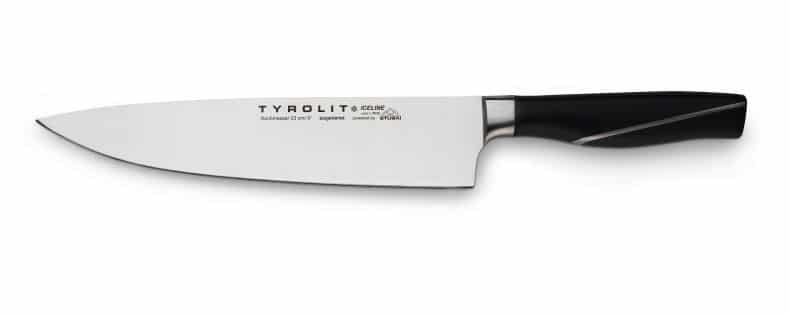

In the kitchen armoury, choosing the right knife is often a matter of personal style and specific task. But one thing is certain: both the santoku knife and the chef’s knife deserve a place of honor in your knife block.
Santoku Knife – Japanese vs. European Variants
The santoku knife has its roots in Japan: here it has long been appreciated as a versatile all-purpose knife. Precisely because of its versatility and user-friendliness, however, it is now also used outside Japan as a useful kitchen helper.
Over time, the Santoku knife has adapted to various knife traditions, allowing one to distinguish between Japanese and European Santoku knives today. A key difference between these otherwise quite similar variants is the sharpening angle: Japanese Santoku knives are typically sharpened to a sharper degree (about 10 to 15 degrees), making them exceptionally sharp. Contrastingly, European Santoku knives are sharpened at an angle of about 15 degrees – akin to most European types of knives. While this makes the knives comparatively less sharp, it endows the blades with special stability.
7 Benefits of a Small Santoku Knife
A small Santoku knife can easily outdo its big brother in terms of versatility. In this article, you will learn about the advantages of these knives.
How should you care for your Santoku knife?
Even though many Santoku knives are made of stainless material, hand cleaning is recommended after each use. You can find out more about this here: Maintaining and cleaning knives. The aggressive chemistry and hard water of the dishwasher can damage the knife and should therefore be avoided.
Tyrolit Life knife blocks are ideal for safe and stylish storage of your santoku knife. These knife blocks are not only an aesthetic highlight in your kitchen, but also protect the fine blade of your knife so that it retains its sharpness for a long time.
Sharpening Santoku Knives Properly
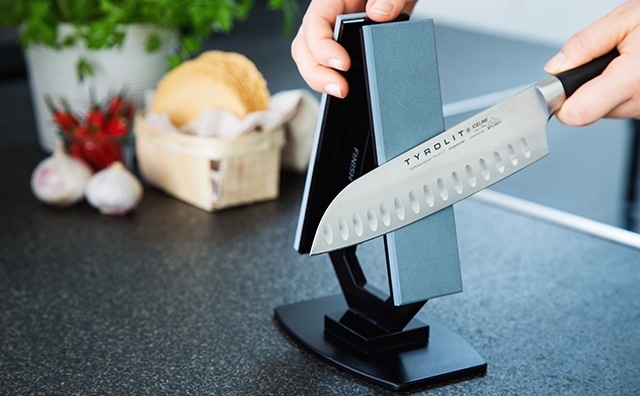
When it comes to sharpening your santoku knife, quality sharpening stones are essential. Tyrolit Life, known for its professional sharpening solutions, offers high quality knife sharpeners that are ideal for sharpening Santoku knives.
The company’s products are known not only for their durability, but also for providing an even cut that greatly increases the life of your knife.
A Santoku knife deserves proper care and maintenance. With the right materials and techniques in production, as well as thoughtful care, you can ensure that your santoku knife will be a long companion in your kitchen.
Whether it’s storing the knife neatly or sharpening it with a quality knife sharpener from Tyrolit Life, a little care will give you many years of excellent kitchen service.
High-quality Santoku knives for amateur chefs and professionals
Santoku knife prices can vary widely and depend on several factors, including the material used, build quality and brand. With the Tyrolit Life Santoku knives, you have found a high-quality kitchen knife made of stainless steel, which has a very good price-performance ratio.
At Tyrolit Life you will also find a range of high-quality additional products, such as knife sharpeners, cutting boards and stylish knife blocks, which are optimally tailored to the needs of quality-conscious chefs.
A well thought-out combination of knives and accessories can therefore not only provide you with better cutting results in the long term, but also significantly extend the service life of your santoku knife. At Tyrolit Life, for example, you can buy a high-quality santoku knife. Buying a kitchen knife is always a worthwhile investment.

